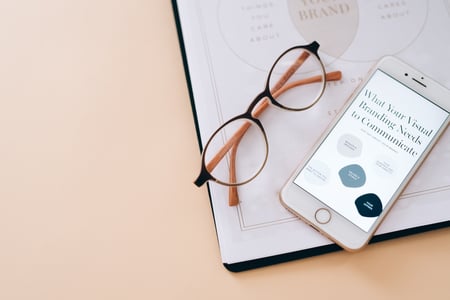
As a marketer you are always searching for ways to attain the needs of your ideal customer and to sell your products or services. By using campaigns, deals and social media you try to attain these objectives. Creativity plays a big role in this; that way you can differentiate yourself from your competition.
You can use creativity in different ways. Have you ever thought about using figures of speech to attain your marketing goals? In this article I will use the power of figure of speech to provide tips and examples.
What are figures of speech?
Figures of speech are rhetorical means by which text and image can be shaped artfully, deviating from the expectation of the receiving party. Their objective is to enhance the persuasiveness of a text, slogan or advertisement. A famous example of a figure of speech is the slogan “Heerlijk, Helder, Heineken” of Dutch beer company Heineken.
The power of figures of speech can be explained with the help of the Elaboration Likelihood Model of Petty & Cacioppo. The model describes two ways that a receiver can process information: centrally or peripherally.
- Central processing means that the information is processed extensively and intensively: the receiver judges all arguments very carefully.
- Peripheral processing means that people do not pay attention to logic or arguments, but rather let themselves be led by superficial characteristics (peripheral cues), such as images or sources that are used in the messaging. Here, the manner of communication trumps the substance of communication.
A smartly chosen tone of voice evokes a positive feeling in the receiver. This can be the case with figures of speech.
Types of figures of speech: schemes and tropes
We can distinguish different types of figures of speech, that are roughly divided in schemes and tropes. Schemes are related to the tone of voice of a message, whereas tropes are related to the substance of the message.
With schemes, the deviation lies mostly at the surface of the text. It often involves a repetition of sounds, letters or words. Examples of schemes are:
- Rhyme: “Heb je een tekort aan kussenslopen? Dan moet je ze nu snel gaan kopen!”
- Alliteration: “Heerlijk, Helder, Heineken.”
- Rhythmic pairing: “Wast een berg, kost een beetje”, by Witte Reus.
- Comparison with 'as': "as green as gras".
- Metaphor: "whetstone for the soul"
- Word play: "Dat zit wel Knorr."
Visual examples of figures of speech
Above examples are all textual examples. However, schemes and tropes can also be used in imagery. Below follow some examples of visual figures of speech:
KLM: swan
KLM also uses figures of speech. They use the swan, as you can see below, as a figure of speech.

Why do figures of speech work so well?
Messages with figures of speech are positively valued for different reasons:
- They are usually easy to remember.
- Solving a joke or metaphor makes the person feel good or "intelligent".
- Figures of speech serve as input for conversations with others.
Altogether, this positive valuation of a text or advertisement can spill over into the advertised product or service, or into the brand. However, with the condition that the message is not difficult to understand. When a figure of speech is not understood or cannot be figured out, the effect is gone. The receiver does not understand the joke and consequently, judges the message poorly.
Do figures of speech work in B2B?
In this article we mostly provided examples from the B2C environment. But figures of speech could also be successful in B2B environments, since the marketing objectives are the same. What matters is that the receiver of your message, in other words your ideal client, is stimulated by a certain message or advertisement, and gets a positive impression of your product or service.
Source that was used with the article:
Hoeken, H, Hornikx, J & Hustinx, L. (2009). Overtuigende teksten. Onderzoek en ontwerp. Bussum: Coutinho.

